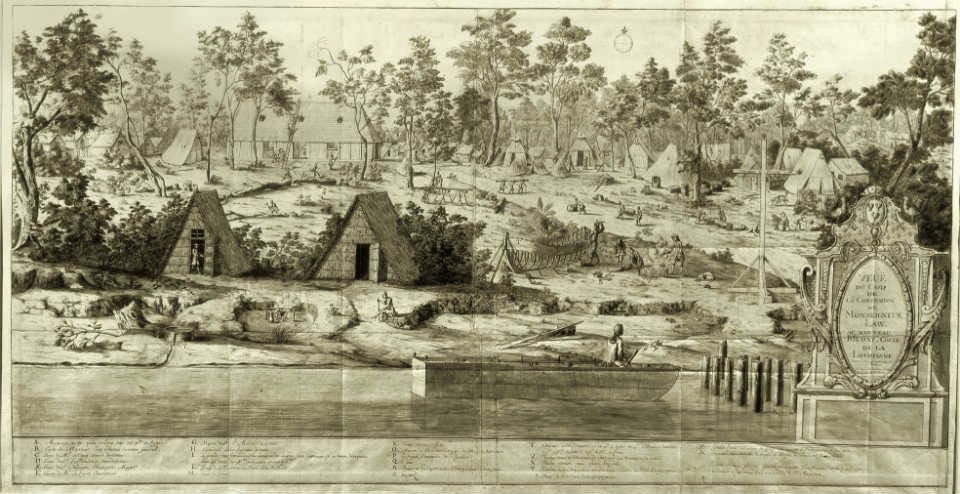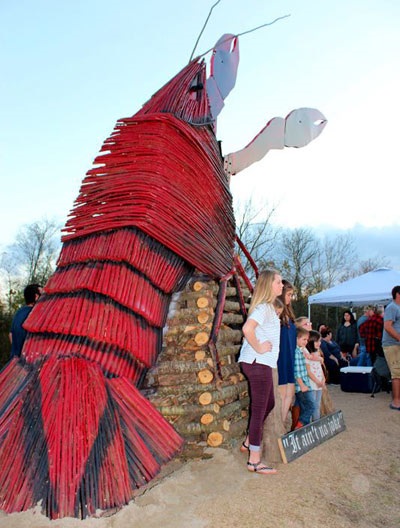History of St. John the Baptist Parish

St. John the Baptist Parish was the second permanent settlement in Louisiana and established in the early 1720's by a group of Germans, hence becoming known as "La Cote des Allemands" or "The German Coast". Led by Karl Frederic D'Arensbourg, a settlement was created on the west bank of the Mississippi River in the area now known as Lucy which was originally named Karistein. Some families also began farming land on the east bank, in what is now Garyville and Reserve.
D'Arensbourg's grandson, Jacques Villere , was born at Lucy and became the second governor of the state of Louisiana. He was the first Creole (Louisiana born) person of pure European descent to hold that office.
The area remained under the French regime until 1768, when France delivered Louisiana to the Spanish. At this time the Acadians or "Cajuns" began arriving in South Louisiana after being exiled from Nova Scotia. The first Acadian settlement was established at what is now called Wallace. The French and German cultures mixed, with French becoming the dominant language. German names were given French translations. Heidel became Haydel, Ruber became Oubre, Treagor - Tregre and so on...
In these early years, transportation was by boat, some on the Mississippi River, which was treacherous, but mainly on the many bayous and lakes. Few roads existed. Observation posts were built along the river, and manned by women, who kept lookout for the few Native Americans that previously lived here.
St. John, with its fertile land being about 9 foot above sea level, proved to be excellent farmland. Germans settlers grew crops that often fed early New Orleans, which would have otherwise fallen victim to famine when supply ships failed to arrive from Europe. Early St. John settlers would paddle their small boats filled with produce to sell at "The French Market" along the New Orleans riverfront.
These early settlers were devout Catholics. The Church was the centerpoint of most activities in these frail communities. Weddings, christenings and funerals were usually attended by the entire community.
In 1807 the territory of Orleans was divided into twelve counties. The county of the German Coast was one of these. Later this was divided into nineteen parishes. St. John was one of those parishes. It received its name from the religious parish of St. John the Baptist. The parish seat was established in the village of Lucy. The building which served as the first courthouse is still standing. In 1848 the parish seat was moved to Edgard.
The Jesuit fathers were the first religious order to settle in the area. The parish contains several ancient cemeteries. One of them, located in Reserve, is the burial place of Caroline Desionde, wife of Civil War General Beauregard. Her sister is buried with her husband, John Slidell, in the Edgard cemetery. This cemetery has been in existence since the first church was built. The church was constructed of handmade cypress lumber in the year 1722. In 1918 when their second church burned down the people of Edgard contributed $90,000 in one day to build another. This beautiful, twin-spired red brick church still stands today. It became apparent that a church was needed for the people on the east bank, so in 1869 a wooden church was built. St. Pierre was established. Later in 1897, the beautiful St. Peter Church was constructed, only to be destroyed by Hurricane Betsy in 1965.
In 1860 there were two newspapers in the parish, La Jeune Americiane and Le Meschachebe. Charles Lasseigne founded a weekly newspaper, La Ruche Louisianaise, serving as its editor. In 1889 he acquired Le Meschachebe ' which was then printed mostly in French. In 1912, Mr. Lasseigne's son Wallace became the founder of L'Observateur, a weekly paper, which is still serving the parish today.
From 1751 when sugar was introduced by the Jesuit Fathers, it took precedence over other industries. In 1758 Joseph Dubreuil was the first man to erect a sugarhouse. In 1860 Leon Godchaux, owner of Reserve Plantation and other properties, conceived the idea of centralization in processing. In 1917 a refinery was added to the factory. Godchaux Sugars remains a landmark, even while ownership has changed.
During the era before the Civil War several beautiful homes were built in St. John. At Wallace, there is Evergreen, built about 1820. Evergreen, with its "flying staircases," has been the locale for many movies. The stately San Francisco of Steamboat Gothic fame, built in 1853, is located at Lions. The Reserve Plantation House on the sugar refinery grounds was built around 1820. President Taft, while making a trip down the river in October 1909, stopped there to speak from a platform in front of the house.
 As the families of the settlement grew, a need for education grew also. Sometimes a plantation owner would hire a teacher and invite the neighborhood children to attend classes. Private schools taught in the French language were established around 1869. The first high schools at Edgard and Reserve were built in 1909. Children attended the schools by horse drawn busses or by commuter train. Today the parish has fourteen public schools, one private school and three parochial schools.
As the families of the settlement grew, a need for education grew also. Sometimes a plantation owner would hire a teacher and invite the neighborhood children to attend classes. Private schools taught in the French language were established around 1869. The first high schools at Edgard and Reserve were built in 1909. Children attended the schools by horse drawn busses or by commuter train. Today the parish has fourteen public schools, one private school and three parochial schools.
Eight communities comprise the whole of St. John Parish. On the west bank of the river lies the sprawling towns of Lucy, Edgard and Wallace. This area is primarily agricultural. Rows and rows of sugar cane cover the fields. The east bank has LaPlace, Reserve, Lions, Garyville and Mt. Airy, each a thriving, bustling community. Industries follow along the river, including a chemical plant, sugar refinery, grain elevators and an oil refinery.
The people of St. John have retained many old customs. Country fairs are held frequently to raise funds for worthy causes. On Christmas Eve the river road is lined with visitors who have come to view the bon fires that dot the levees on both sides of the river.
Recipes, also, have been handed down through the generations. Andouille, that unique tasting gumbo sausage, was made during the winter, when the hogs were butchered at "La boucherie."
It was a way of preserving the pork without refrigeration. St. John is so proud of its andouille, that LaPlace has been designated "Andouille Capital of the World." The Andouille Festival is held every year in October.